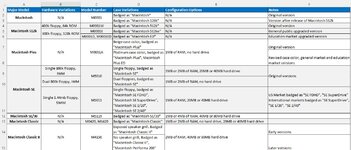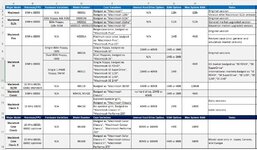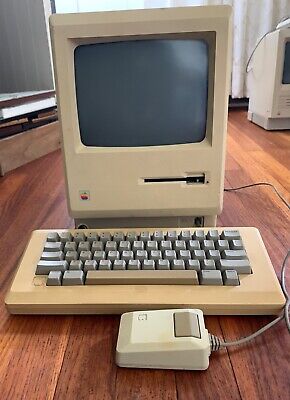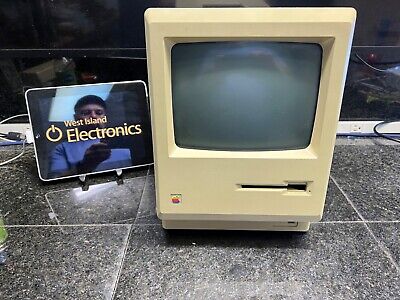please do share your thoughts on Compact collecting.
I did have a fairly large collection of compacts, as recently as a few years ago. The only one I've never obtained is the 512k. But the only ones I'm keeping long-term are SE/30s.
Personally, I find pre-SE machines to be... rather older feeling and less refined than the later models. I suppose that sounds obvious when said that way. The peripherals are particularly different to the ADB ones, to the extent that I don't enjoy using them. That spoilt the whole experience of using a Plus for me. I also don't like the fact that pre-SE models are passively cooled. Yes, in reality it makes very little difference these days - the machine would never be turned on for long enough periods for it to really matter, but I just can't get over how wrong it feels to have the analog board cooking itself... so I just avoid the pre-SE models now.
I had a really lovely, fairly early example of an actual 128K (before they badged it as 128K, even), but I didn't keep it because I just never used it and I don't collect Macs to have them as ornamenents. I collect them because I either find the hardware interesting, or they can run the software/games I want to use. The 128k as a computer to use is not very useful at all, its extremely limited and very much
unenjoyable to use (in my opinion), but its certainly iconic and important to own if you want a collection that represents each phase of early Mac development.
I regret obtaining any Classic and Classic II models. They are frustrating to work on. The analog boards are not reliable. They were cheaply made and it shows. So, why does reliability matters when it comes to a 30 eyar old computer that gets turned on twice a year? Well... maybe it doesn't really. But it still bothers me. And I am still
Again I am just too practical (maybe? Or am I? why do I have all these old computers anyway?!), and that's where I come to SE/30s. There are just so many things I like about the SE/30, primarily the fact it can run most of the software that any other compact can, and they are really quite good computers once you put a few upgrades in them. I personally just don't see a reason to own the others - unless, you decide you want to collect them for any of the reasons
@cheesestraws explained well.
Compacts are extremely collectible. They are not too big. They stack. They can be kept in bags made especially for them. And most importantly, they're fun. I can definitely see the appeal in collecting each model. They really lend themselves well to that type of collection.





